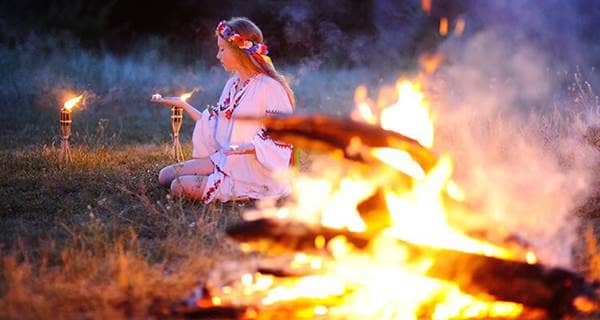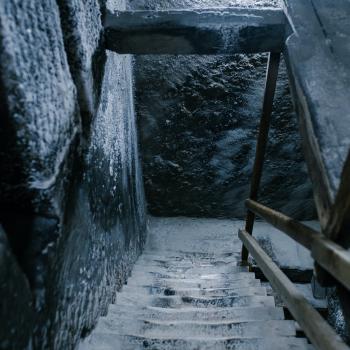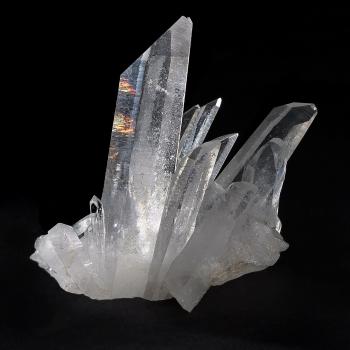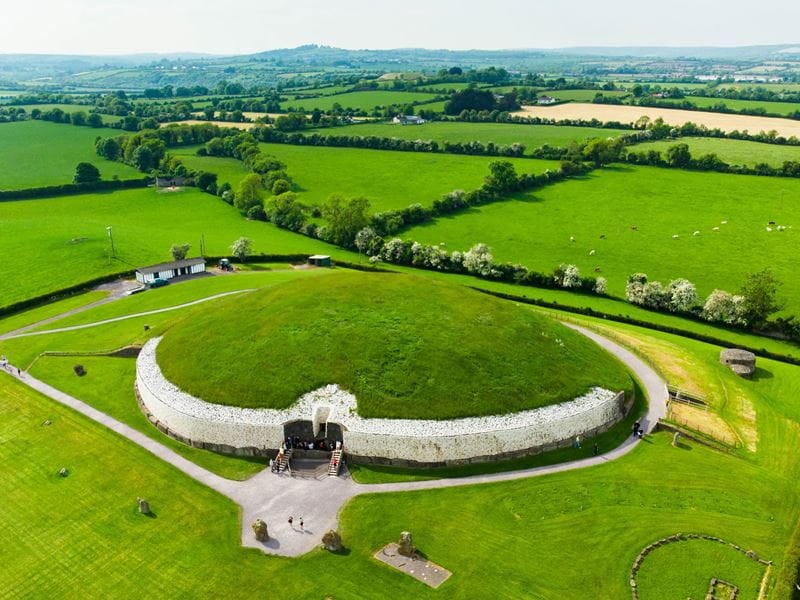
- Trending:
- Pope Leo Xiv
- |
- Israel
- |
- Trump
- |
- Social Justice
- |
- Peace
- |
- Love
The 100 Most Holy Places On Earth
Newgrange

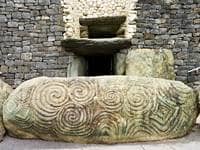
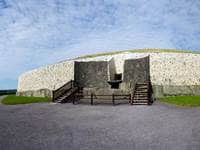
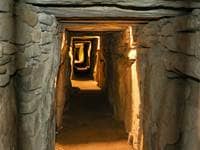
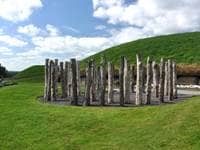
Associated Faiths:
Visited by people of many faiths—but particularly those who identify as “New Age” or “progressive Christian.” It also draws non-religious tourists.
Accessibility:
Open to visitors. Newgrange welcomes about 200,000 visitors a year.
History
Newgrange (whose Irish name, An Liamh Greine, means “Cavern of the Sun”) is an ancient Neolithic burial mound and astrological temple. Typically dated to around 3,200 BCE, Newgrance—and its two sister mounds, Knowth and Dowth—predate the building of the Great Pyramids of Giza or Stonehenge by about 500 years. Prior to 1699, it was assumed to be nothing more than a large, kidney-shaped hill. However, it was accidentally discovered, and deemed to be an ancient burial site based on the charred human remains deposited within.
The hill covers approximately 1 acre and stands more than forty feet high. A tunnel extends into the center of the mound some 62-feet, until it reaches a chamber which is cruciform in shape, and which has a corbeled vaulted ceiling which is 23 feet high. The interior and exterior have carved into them a plethora of symbols. Evidence indicates that the internal chamber of this temple-tomb has remained watertight for an incomprehensible 5,200 years. Estimates suggest that the project would have taken 300 men some 20-years to create.
It is believed by some that the Beaker People (or the people of the Bell Beaker Culture) were the builders of this remarkable edifice. Others believe that these same people entered Ireland around 2,500 BEC and discovered the already extant but abandoned Newgrange and simply adopted it as their own. Part of the challenge of assuming that the burial mound-temple of Newgrange is Bell Beaker Culture in origin is the belief of many historians the Bell Beakers post-date Newgrange by no less than 400 years, and probably more like 700 years. Consequently, the builders of the mound may never be known. On the other hand, the fact that the same designs carved at Newgrange have also been found on the Mediterranean islands of Malta and Gonzo suggest that whoever build this remarkable temple-mound certainly “got around.”
Newgrange has been referred to as a “place of astrological ritual.” There is no question, whoever the builders of this unique sacred structure were, they understood planetary alignment and felt a deep connection to it. As evidence of that, the mound is situated so perfectly that—for about a week before and after the winter solstice (December 21)—the entrance passage is perfectly aligned with the rising sun. As a consequence, during that approximately two-week window, a shaft of light (from the sun) penetrates the mound’s interior, traveling some 62-feet into the bowels of the temple-tomb, and casting sunlight directly on a stone decorated with carved spirals. Thus, the site marks the annual turning point in the sun’s cycle, and the beginning of the return of warmth, crops, and longer days. All evidence points to the belief that Newgrange was a temple used for solar veneration by whomever built it.
Religious Significance
Much like the Giza’s pyramids and Stonehenge’s monument, scholars do not all agree on the primary purpose of Newgrange. The idea that it was a burial site and also somehow associated with reverence for (or worship of) the sun, seems evident—by the bones found within, the mound’s alignment with the winter solstice sun, and the carving within and without the edifice. Thus, it is clear that those who built it felt like it was sacred, and that the rites or rituals performed therein somehow endowed them with power. But beyond that, many of the details are sketchy.
The plethora of spirals that appear inside and outside of the temple are believed to be symbolic representations of the sun. Indeed, from an arial view, the mound itself may have that same symbolic design. Because of the sun’s association with rebirth, some have conjectured that the temple-mound (specifically its central cavern with an opening and shaft leading to it) represents the womb of the earth. The light that enters the shaft and reaches the central chamber each winter solstice has been interpreted as a symbolic representation of the male sun god impregnating mother earth, causing the coming of spring and new life.
There are three stone basins in the branches of the cruciform central chamber. While not all agree on what these were used for, the most likely suggestion is for ritual washings for those participating in the temple’s rites. Secondarily, it is possible that they were used for washing the bodies of the deceased (whose bones have been discovered in the temple). Less likely is the theory that these basins were for the purpose of holding funerary offerings.
While Newgrange is not a “sacred space” in the sense of a modern Muslim mosque, Christian cathedral, or Hindu temple, nevertheless, this is definitely a site once held to be sacred to those who used it. It seems clear that its builders believed that the edifice could provoke the return of life lost during the winter months. It is clear that those who used it believed in a god (possibly Dagda) and in an afterlife of some sort. Newgrange has all of the earmarks of religion, prehistoric as it is. And it is clear that the ancients went to great lengths to sanctify this space, to offer it to their god as a temple, and to reverence and petition something higher than themselves in this sacred site. Those who visit Newgrange and know a bit of its history will find it hard to not “feel something” when walking around this once holy site.


